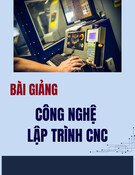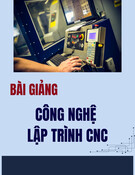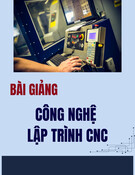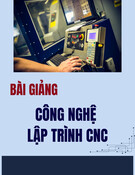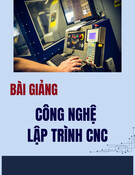
NBS Special Publication 700-
oG,
Industrial Measurement Series
Measurement
Evaluation
J. Mandel
National Measurement Laboratory
National Bureau of Standards
Gaithersburg, Maryland 20899
and
L. F. Nanni
Federal University
Porto Alegre, Brazil
March 1986
...'"
OF
't
~\If ~
.;.'~
9,.
( .
"""FAU o'
s. Department of Commerce
Malcolm Baldrige, Secretary
National Bureau of Standards
Ernest Ambler, Director
Simpo PDF Merge and Split Unregistered Version - http://www.simpopdf.com

.ibrary of Congress
;atalog Card Number: 86-600510
~ational Bureau of Standards
ipecial Publication 700-
~atl. Bur. Stand. (U.
:pec. Publ. 700-
0 pages (March 1986)
~ODEN: XNBSAV
S. Government Printing Office
Washington: 1986
For sale by the Superintendent
of Documents
S. Government Printing Office,
Washington, DC 20402
Simpo PDF Merge and Split Unregistered Version - http://www.simpopdf.com

FOREWORD
When the National Bureau of Standards was established more than 80
years ago, it was given the specific mission of aiding manufacturing
and commerce. Today, NBS remains the only Federal laboratory wi th this
explicit goal of serving U. S. industry and science. Our mission takes
on special significance now as the country is responding to serious
challenges to its industry and manufacturing-- challenges which call for
government to pool its scientific and technical resources with industry
and uni versi ties.
The links between NBS staff members and our industrial colleagues
have always been strong. Publication of this new Industrial
Measurement Series . aimed at those responsible for measurement in
industry, represents a strengthening of these ties.
The concept for the series stems from the joint efforts of the
National Conference of Standards Laboratories and NBS. Each volume
will be prepared jointly by a practical specialist and a member of the
NBS staff. Each volume will be written wi thin a framework of
industrial relevance and need.
This publication is an addition to what we anticipate will be a
long series of collaborative ventures that will aid both industry and
NBS.
Ernest Ambler . Director
iii
Simpo PDF Merge and Split Unregistered Version - http://www.simpopdf.com

INTRODUCTION
This paper was published originally as a chapter in the book
entitled " Quality Assurance Practices for Health Laboratories"
. *
It is
for that reason that the examples used as illustrations are taken from
health-related fields of research. However , the statistical concepts
and methods presented here are entirely general and therefore also
applicable to measurements originating in physics , chemistry,
engineering, and other technical disciplines. The reader should have
no difficulty in applying the material of this paper to the systems of
measurement in his particular field of activity.
J. Mandel
January, 1986
* J. Mandel and L. F. Nanni, Measurement Evaluation Quality Assurance
Practices for Heal th Laboratories. Washington: American Public
Health Association; 1978: 209-272. 1244 p.
Simpo PDF Merge and Split Unregistered Version - http://www.simpopdf.com

ABOUT THE AUTHORS
John Mandel
John Mandel holds an M. S. in chemistry from the University of
Brussels. He studied mathematical statistics at Columbia University
and obtained a Ph. D in statistics from the University of Eindhoven.
Dr. Mandel has been a consultant on statistical design and data
analysis at the National Bureau of Standards since 1947. He is the
author of a book , "The Statistical Analysis of Experimental D.ata" , and
has contributed chapters on statistics to several others. He has
written numerous papers on mathematical and applied statistics , dealing
more particularly wi th the application of statistical methodology to
the physical sciences.
Mandel has served as a Visiting Professor at Rutgers Uni versi ty
and at the Israel Institute of Technology in Haifa. He has contributed
to the educational program of the Chemical Division of the American
Society for Quality Control through lectures and courses.
A fellow of the American Statistical Association, the American
Society for Testing and Materials~ the American Society for Quality
Control, and the Royal Statistical Society of Great Britain , Mandel, is
the recipient of a number of awards, including the U. S. Department
Commerce Silver Medal and Gold Medal , the Shewhart Medal, the Dr. W.
Edwards Deming Medal , the Frank Wilcoxon Prize and the Brumbaugh Award
of the American Society for Quality Control.
He was Chairman of one of the Gordon Research Conferences on
Statistics in Chemistry and Chemical Engineering and has served on
several ASTM committees and is , in particular , an active member of
Committee E- 11 on Statistical Methods.
Luis F. Nanni
Luis F. Nanni holds a Ci vi! Engineering degree from the National
Uni versity of Tucuman , Argentina and the M. A. from Princeton
Uni versi ty. He was a member of the faculty of Rutgers Uni versi ty
School of Engineering for many years and served there as Professor of
Industrial Engineering. Professor Nanni also has extensive experience
as an industrial consultant on statistics in the chemical sciences, the
physical sciences and the health sciences. He is a member of several
professional societies including the American Statistical Association
the Institute of Mathematical Statistics, the Operations Research
Society of America, the American Institute of Industrial Engineers the
American Society for Engineering Education.
Professor Nanni s fields of specialization are statistical
analysis and operations research; his scholarly contributions include
statistical methods, random processes and simulation , computer
programming and engineering analysis. At the present time he is
Professor of Ci viI Engineering at the Federal University in Porto
Alegre, Brazil.
Simpo PDF Merge and Split Unregistered Version - http://www.simpopdf.com


![Bài tập tối ưu trong gia công cắt gọt [kèm lời giải chi tiết]](https://cdn.tailieu.vn/images/document/thumbnail/2025/20251129/dinhd8055/135x160/26351764558606.jpg)




